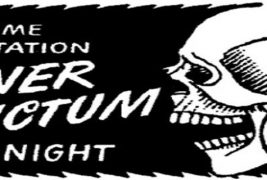
No special effect ever created can match the power of the human imagination, the ability of the mind’s eye to envision endless possibilities. Or create endless terror. In today’s computer saturated world, it seems hard to believe that people once gathered around the radio as their primary source of entertainment. But for over thirty years, from 1930 to around 1962, the humble radio was indeed an immense engine of the imagination.
“You had to believe it to see it” was one clever quote about the power of radio. Truer words were never spoken. Hundreds of radio shows crowded the airwaves for attention, ranging from comedy to crime drama to westerns and beyond. But no genres benefitted from the power of radio more than horror and science fiction.
In film and TV, horror and SF were always bogged down by budget and the inability of effects to measure up to what needed to be shown. With radio, this problem could be cheerily tossed out the window and into the dumpster. With good sound effects and a dedicated cast, the listener’s mind could fill in all the blanks. If your story needed a horde of millions of rats, the sound effects man could conjure it up with squeaks, squeals and the sound of scurrying claws. If the story had a slithering blob or a shambling zombie, those could also be created with effects and good voice acting.
There were tons of radio shows devoted to the macabre and the weird, more than could adequately be described in an article of this length. Some lasted only a couple of shows. Some, like Suspense ran for 20 years. Many of these radio horror shows were a huge influence on later TV and movie productions. Several episodes of Rod Serling’s Twilight Zone got their start as radio dramas, most notably “The Hitch-hiker.” And since the work of Serling and others influenced current creators, you could say the inspiration of horror radio lingers even today….
The power of radio to inflame the imagination was immense. Most readers will certainly be familiar with the 1938 broadcast of H.G. Wells’s The War of the Worlds, which induced panic in a populace that really thought aliens were invading the Earth. That production was the brainchild of Orson Welles, who had to go on the air and make a sheepish declaration that the program was fiction. Welles was a major player in dark radio fiction. He also did a famous radio version of Dracula, was involved in the notorious story “Donovan’s Brain” and for a time was the curator of The Black Museum, a radio program inspired by gruesome crimes. He was also briefly the voice of one of radio’s darkest heroes, The Shadow.
Most radio horror and science fiction programs were anthologies. A different tale with different characters would be told every week. There was a significant blurring of the lines on many of the programs. Widely regarded as the best of them all, Suspense usually told crime stories with a twist, but could also veer into tales of the supernatural. The same also could be said of Escape, another popular radio staple. Sometimes “classy” radio programs like the Lux Radio Theater would venture into adaptations of classic horrors like “Frankenstein,” “Dr. Jekyll and Mr. Hyde” and the stories of Edgar Allen Poe. But there were those “true” radio horror shows like Inner Sanctum and Lights Out that delved deeply into macabre tales of the supernatural every week.
Another huge advantage that radio horror had over films was that there was no “Hayes Code” enforced on radio. Starting in 1934, the Hayes Code laid down strict guidelines for “decency” in movies, including the dictate that good must always conquer evil. Extreme gore and deviltry were forbidden in the movies of the ‘30s and ‘40s. But no such code was in play as far as radio was concerned. And that loophole was gleefully taken advantage of on programs like Lights Out and Inner Sanctum. Heroic characters could meet ghastly fates and the “bad guys” could triumph. And the radio writers really indulged their taste for sadism and darkness to the full.
A very famous Lights Out sketch illustrates that approach very well. “Chicken Heart” was a notorious bit of sci-fi horror that lasted only seven and a half minutes. Yet in that length of time, it doomed the human race to suffocate under a mass of slithering flesh. An experiment with a chicken heart went disastrously wrong, resulting in a growing blob of brainless flesh that doubled in size every minute. The last sound of this story was the horrified screams of men aboard an airplane that crashed into the chicken heart…and then the titanic thump-thump of the heart itself. This 7 and a half minutes traumatized a whole generation and is a great example of the boundless horrors radio could produce.
In the earliest days of horror radio, the shows were pretty basic in their approach and are rather creaky to listen to today. Although a lot of fun, they relied on every Halloween spook show cliché you could think of….creaking doors, yowling cats, howling wolves, thunder and lightning. Most revolved around ghostly revenge for murder. Some of these elemental examples of radio horror were The Witch’s Tale, The Hermit’s Cave and The Sealed Book.
As the ‘30s went on, the approach to horror became more sophisticated and stronger. Orson Welles broke down a lot of barriers with his top-notch version of Dracula as well as the unforgettable The War of the Worlds. But it was really a man by the name of Wyllis Cooper who brought radio horror to a whole new level with Lights Out. Cooper came up with some very original and clever horror tales that relied on more than the usual ghosts, vampires and werewolves. And he wasn’t afraid to go for pure shock, either. Cooper eventually turned the show over to Arch Oboler, who was even more visceral in his approach to the subject. Lights Out lasted into the early ‘50s and even made the transition to TV. Cooper went on to do another fantastic radio horror anthology, Quiet Please, which in my opinion was the best to ever grace the airwaves.
One thing most of the radio horror shows had in common was the concept of a host. Almost every show had some ominous, eccentric character act as a guide into the world of the unknown. The Witch’s Tale had cackling Old Nancy and her cat Satan, The Sealed Book had the Bookkeeper, The Mysterious Traveler sported the grim tones of its title character. By far the most memorable of all the hosts was “Raymond,” who provided a nonstop barrage of morbid puns and ghoulish chatter for Inner Sanctum. Raymond was a huge influence on the hosts who would later pop up in EC Comics like the Cryptkeeper and the Vaultmaster. He would chuckle and mutter “hmmmm…” in response to the murder and mayhem on the program. One example would be: “Poor Helen…her health just went from bad to HEARSE, hehehehe…” The original Raymond was replaced by another similar character simply known as “Your Host,” who engaged in much the same patter. Raymond was really the king of the radio horror hosts and a tremendous influence on all similar characters who came later.
I would be remiss if I did not mention the CBS radio program Suspense, the most successful anthology show ever to run. It was on the air from 1942 to 1962 and many agree that the Golden Age of Radio finally came to an end when Suspense broadcast its last episode in 1962. The show was not strictly horror…indeed, most of its episodes were mystery and crime thrillers…but when it did run the occasional all-out horror story, they pulled out all the stops. It had the highest production values of any radio show, with a full orchestra playing on the soundtrack as opposed to the lone organ that accompanied most programs. It also had an amazing guest star lineup that featured the biggest stars in Hollywood. There were many great episodes of Suspense, but “Sorry, Wrong Number” featuring an impassioned performance by Agnes Moorehead remains the best remembered, even inspiring a movie.
You could spend a lifetime digging up (pun intended) the great radio horror shows of the past. I’m always finding new ones, like Dark Fantasy, an underrated gem that originated from the unlikely location of Oklahoma City. I’m including a list of what I think are some of the best radio horror programs below, complete with links to the actual episodes when possible. I’ve also put a couple of links to resources where you can find more programs. It is sad to say that many episodes have been lost or destroyed or of such poor audio quality that they can no longer be heard, but quite a few still exist.
I discovered a lot of information about this forgotten area of horror during my research and I’ve now made it a mission to catch up with as many of these shows as I can. Hopefully you will join me…if your heart can stand the strain!
TOP 10 RADIO HORROR EPISODES
- QUIET, PLEASE — “The Thing On the Fourble Board”
Quiet Please only lasted a couple of years, but it was consistently the most original and bizarre of all the radio horror programs. Of all the radio horror shows I’ve heard, this is the most disturbing by far. It tells the story of oil rig worker Porky, who tells of the strange discovery he and a good friend made while drilling miles deep into the Earth. From those unfathomable abysses, they bring up a stone finger of some kind with a gold ring on it. Well, both the finger and the ring belong to something…something that has come up from the pit to reclaim what belongs to it. The Thing is indescribably bizarre and when you hear its voice, I guarantee your blood will go cold in your veins. There’s a very sick, almost absurd twist to the ending of this one that makes it incredibly dark. Ernest Chappell did the voice work for Porky, as he did for almost all of Quiet, Please and did a tremendous job. This is radio horror at its most macabre.
- ESCAPE — “Three Skeleton Key”
There are several versions of this classic story out there, but I’m choosing to deal with the best known one featuring Vincent Price that aired on Escape. Escape was an anthology series that promised to take you away “from the four walls of today” via many different kinds of adventure tale. “Three Skeleton Key” was pure horror and gave generations of fans nightmares. It’s an adaptation of a short story by French author George G. Toudoze. The story is narrated by Vincent Price, who recalls the incident years after it happened. He was stationed on a lonely, isolated lighthouse with two eccentric comrades when an abandoned ship crashes on the tiny outcropping where the lighthouse is located. Did I say abandoned? Not quite. The ship is carrying a crew of rabid, ravenous RATS who apparently have devoured the previous human crew. Now they’re looking for new food…like the three keepers. The men frantically retreat to the top of the lighthouse, where only glass walls separate them from the hungry horde. Not only are the rats a menace, but one of the men begins to crack under the strain….
The sound effects men had a field day with creating the sound of millions of hungry rats and indeed the episode won an award for imaginative sound effects work. Price, who appeared on many radio horror shows, does his usual great job as the narrator of the macabre tale.
- SUSPENSE — “Sorry, Wrong Number”
This is likely the most heard and most remembered of all horror-oriented radio shows. It’s not horror in the supernatural or monster sense, but rather a tale of human horror and ever-increasing terror. It proved so popular that it was done on Suspense a total of seven times, always with the same star, Agnes Moorehead. Those who remember her only as Endora on Bewitched would be amazed at her radio credits. Here she delivers a tour deforce of mounting fear and intensity as a bed-ridden woman recovering from a nervous breakdown who accidentally overhears a murder plot on her phone. She frantically tries to tell the authorities about the impending murder but her growing hysteria works against her. Finally it dawns on her that SHE is the target of the murder! Moorehead gives a powerful performance as the frightened woman who proves to be her own worst enemy. The story is a throwback to a time when actual operators connected all telephone calls…something that few people born after 1960 could understand. The story was so popular that it was made into a movie with Barbara Stanwyck in the Moorehead role.
- LIGHTS OUT — “Valse Trieste”
This episode of Lights Out created a furor with its macabre intensity and resulted in hundreds of outraged calls to the network. In many ways, it is a precursor to later movies that featured women terrorized and killed by homicidal maniacs. It’s strong stuff to hear even today. Two women on a camping trip get lost and argue about which path to take out of the woods. The one they eventually choose takes them to a lonely house, where they hear beautiful violin music playing. They knock on the door…and enter a hell that will change their lives forever. Inside is the lonely Mr. Boyd, a “gentle man” who is looking for companionship and will go to great extremes to get it. Before long, the girls are the prisoners of a maniac, who curiously always seems to stand in the shadows. He will flip a coin and let chance determine the future. One girl will remain as his bride. The other will die. The terror of the girls as they realize their predicament is almost physical. One of them was played by a young Dinah Shore. This is a harsh tale of horror only partially lessened by an ending that seems tacked on.
- INNER SANCTUM — “The Judas Clock”
Raymond Your Host welcomes you into the Inner Sanctum to relate this grim tale of a cursed clock that brings horrible death to everyone who owns it. It seems the chimes of the clock are made from the melted 30 pieces of silver Judas received for betraying Christ. This is the story of a man who tries to recover the clock to help solve the murder of his father, only to fall prey to the curse himself. Pretty bloody for its time.
- DARK FANTASY — “Spawn of the Subhuman”
Dark Fantasy was the creation of Scott Bishop, who came up with some pretty outrageous concepts for his show. This is one of the weirdest and pulpiest of the bunch. A female soprano singer plagued by strange visions and her lover take a plane flight that is hijacked by a gorilla-like creature that can not only speak, but sing opera! He is taking them to his creator, a demented scientist who needs the woman’s voice for nefarious purposes of his own. An absurd, but unforgettable adventure into the weird.
- LIGHTS OUT — “Spider”
What Escape’s “Three Skeleton Key” did for rats, this episode of Lights Out does for spiders. Arachnophobes are highly encouraged to skip this one. Lenny and Joe are two adventurers in the remote Amazon looking to make a buck finding insect specimens for scientists. When they see a spider the size of a German Shepherd, they think they may have made their fortune. But are they hunting the spider or is it hunting them? The final moments of this one are still nerve racking to listen to and all the imaginative qualities of radio are pushed to the max to describe the horror that walks on eight legs. Presented to you by Ionized Yeast!
- THE CREAKING DOOR — “Don’t Go Down The Mine”
The Creaking Door was unique due to not only its origin–it was out of South Africa–but also the late period it was on the air. This particular episode was believed to be from 1964, a couple of years after the Golden Age of Radio had finished in America. Nevertheless, it was a very traditional radio horror show and could have easily fit along with the American radio horror shows of the ‘40s and ‘50s. This episode is a very eerie ghost story in the grand tradition. A geologist and his wife stumble across an abandoned coal mine in Wales. Investigating the mine on a lark, the hero is chilled to hear the chanting of ancient Druids while in the depths of the mine. A very old terror stalks the mine and soon the geologist and his wife learn just why it was abandoned.
- SUSPENSE — “Ghost Hunt”
This well-remembered episode of Suspense sets up a classic haunted house trope. Happy-go-lucky and wisecracking DJ Smiley Smith has figured out his latest radio stunt. He will spend a night in a haunted house where the last four owners have committed suicide. He’s accompanied by a well-known expert in ghosts and his pet dog for the trip. Smiley’s wits hold up pretty well at first. Then his dog runs off, terrified by something it has seen. And Dr. Reed fails to answer on his walkie-talkie. Perhaps the answer lies with the four strangers that just arrived at the house. Gradually mounting chills leading to a powerful climax. This episode inspired many later and lesser tales in a similar vein.
- THE MYSTERIOUS TRAVELER — “Behind the Locked Door”
The Mysterious Traveler was one of the most popular anthology hosts on radio–a cultured, but morbid gentleman traveling on a train who entertains his companions (i.e., YOU) with macabre tales. This one is real nightmare fuel. A scientific expedition to the more remote areas of the Grand Canyon discovers an entrance into a cave sealed by tons of fallen rock. Inside the huge cave, they find human skeletons and the abandoned wagons of a pioneer expedition that was sealed inside. There’s a swift running river going through the cave, with mountains of fishbones beside it. Then the scientists become aware of something stalking them in the dark…something that’s been imprisoned in that cave a very long time. If you’re familiar with the ‘70s British horror movie Raw Meat, you may have an idea of what’s in that cave.
Here are some links where you can find TONS of radio horror shows!
http://www.themonsterclub.com/radiolibrary.htm
https://www.otrcat.com/horror-and-mystery-on-the-radio
https://www.otrcat.com/scary-halloween-old-time-radio-shows
One thought on “Terror on the Air: Ten Terrifying Horror Shows from Radio’s Golden Age”
Comments are closed.


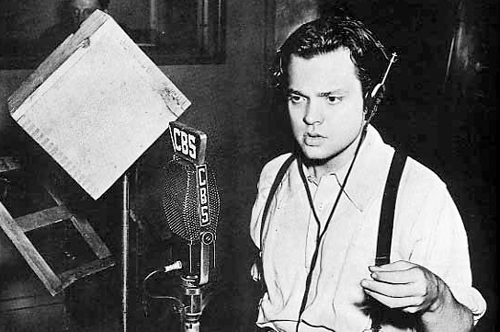
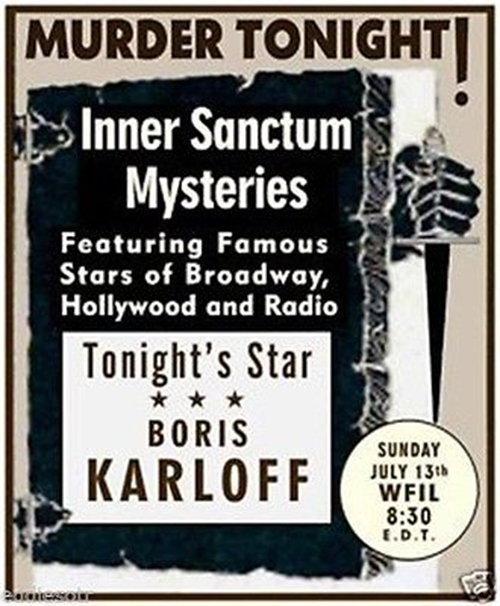


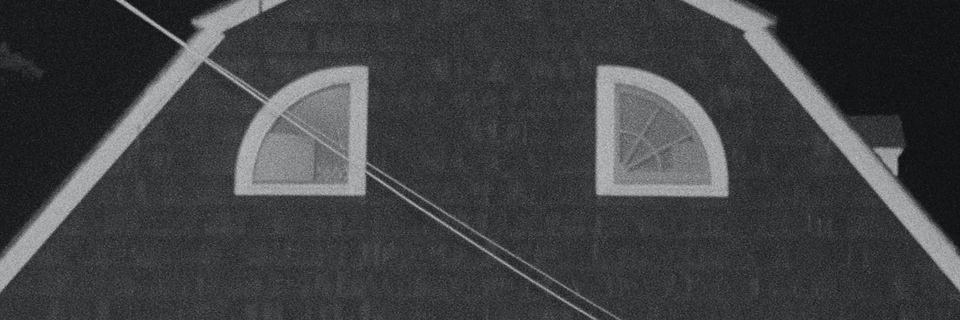
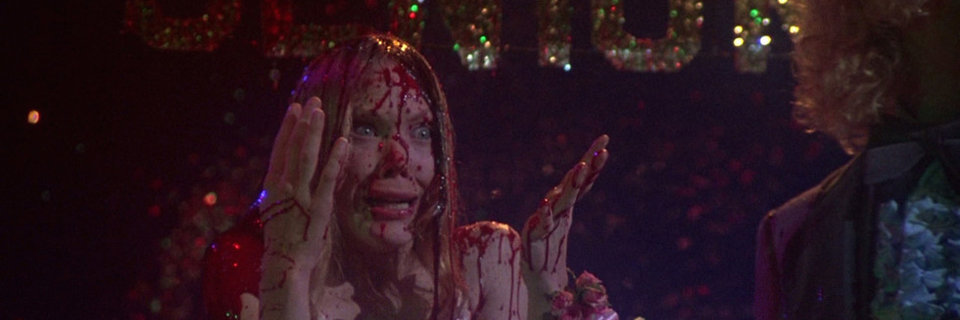
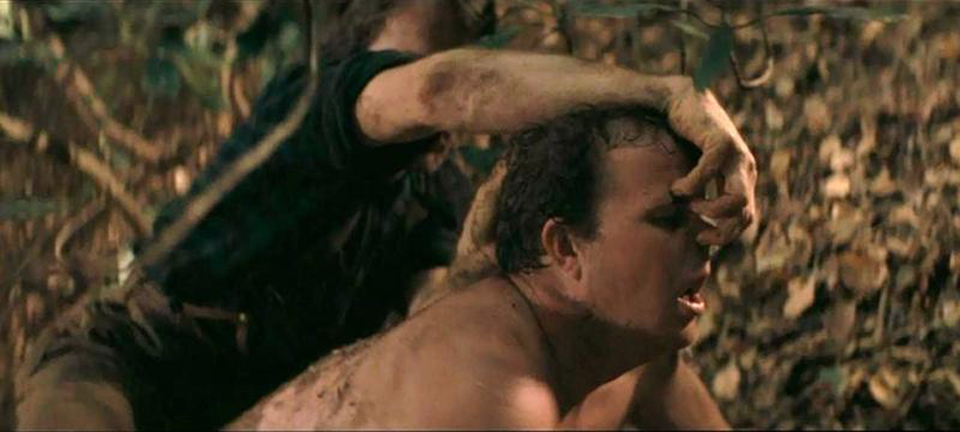










“Suspense” was a great show. Some terrific episodes include “Narrative About Clarence,” starring Laird Cregar as an evil magician; “”Summer Night,” based on a little-known Ray Bradbury story about the Lonely One; and “The House in Cypress Canyon,” an unusual werewolf story. To learn more about Suspense, you can read my book “Radio’s Outstanding Theater of Thrills,” which is available in print and kindle versions from Amazon.